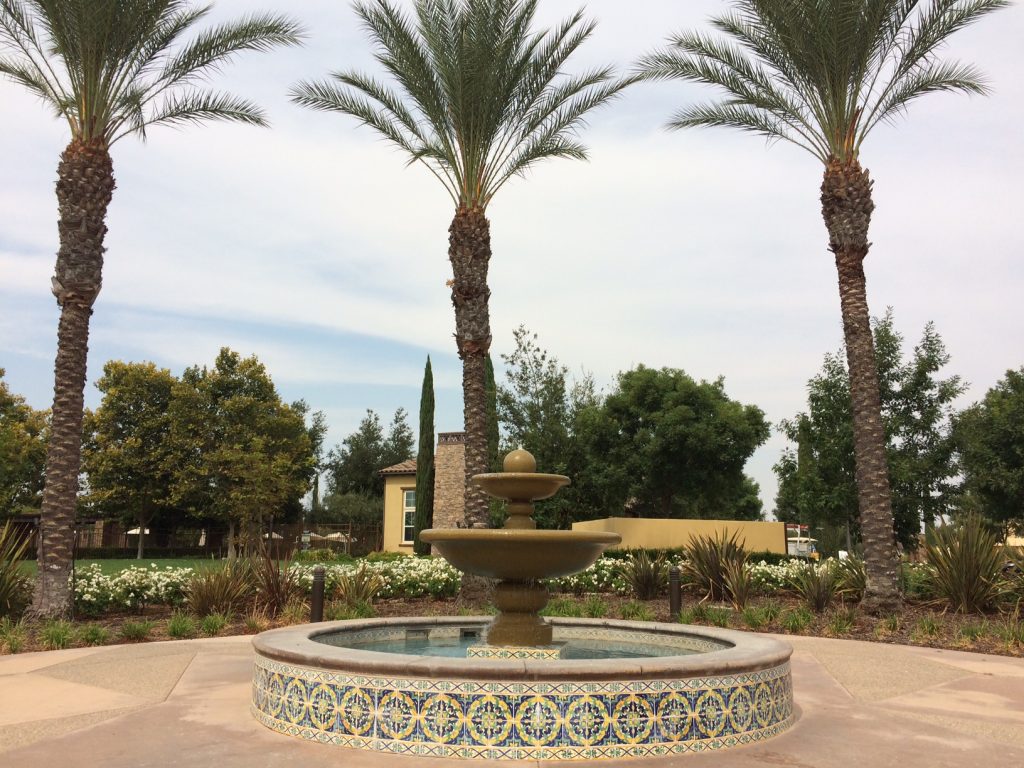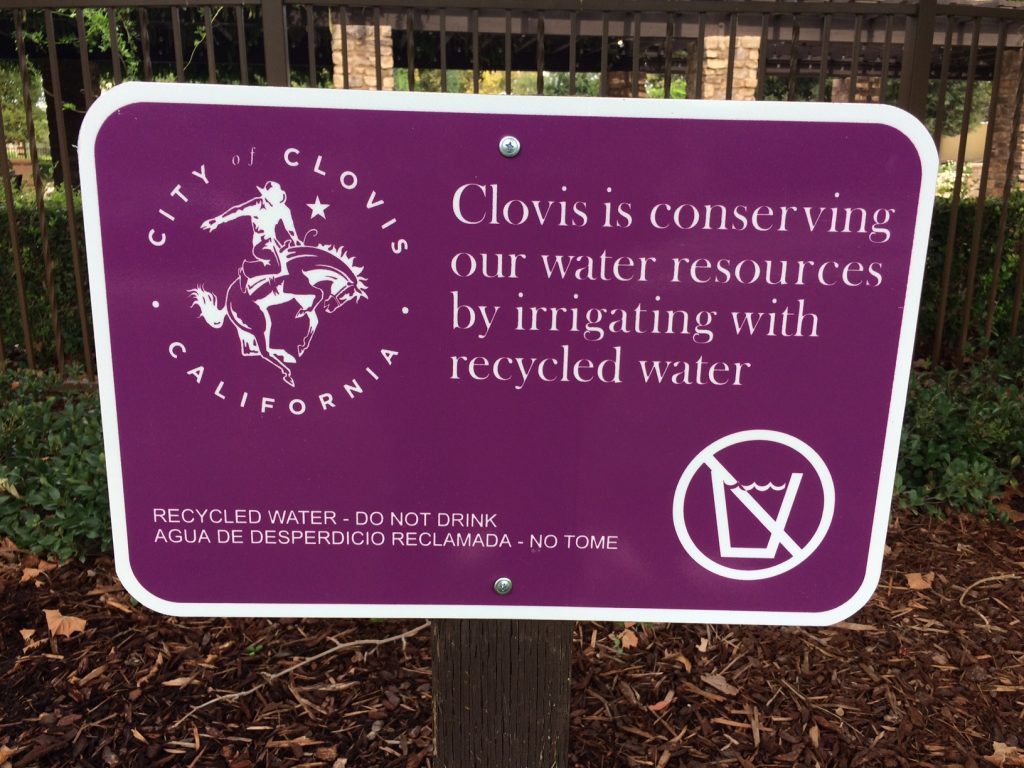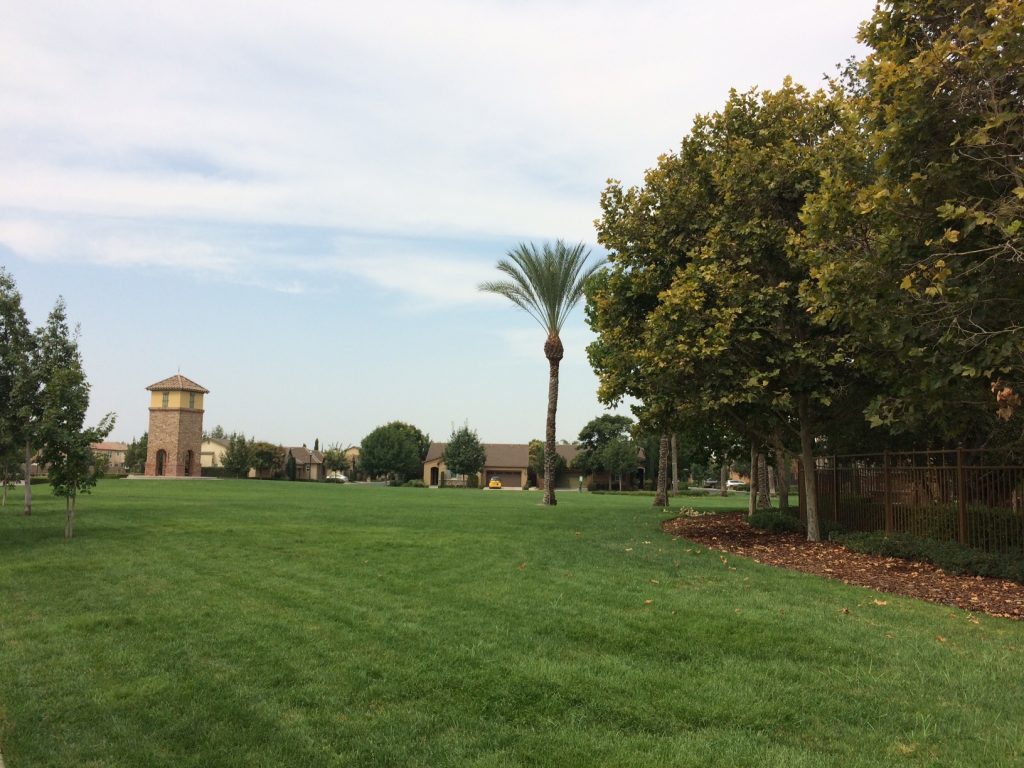
In the early 2000s, when the Harlan Ranch subdivision was still in the planning stages, the developer’s intent was always to irrigate the community’s landscaping with recycled “purple pipe” water, but due to the development’s distance from town and the slow down of growth caused by the Great Recession, the conservation dream had yet to be realized—until now.
Unlike most city growth, Clovis City Manager Luke Serpa said Harlan Ranch was unique in that it was developed more than a mile away from the nearest neighboring subdivision at the time of its construction, which meant the developer had to front the cost to expand the city’s water and sewer lines out to the luxury homes subdivision. Over time, as new developments spring up, part of those expenses would gradually be reimbursed.
This reimbursement process was acceptable to developers for the essential water and sewer lines, Serpa said, but because of the cost for purple pipe—a whopping $1.5 million—and the fact it was not an absolute necessity, Harlan Ranch developers decided instead to prepare its irrigation system for the connection and wait for other developments to gradually bring the purple pipe out to the area. This plan was sound at the time, Serpa said, as projected growth in the area was strong, but that growth soon came to an almost non-existing halt when residential construction slowed during the recession.

For years, this didn’t present a major issue for Harlan Ranch—there was still plenty of potable water that could be used for irrigation. But then the drought hit and Sacramento mandated Clovis to use 36 percent less water and reduce irrigation.
“The next thing that really brought the subject to a head was when the state came down with their mandatory water conservation measures,” Serpa said. “Harlan Ranch had invested heavily in landscaping with the idea that it was eventually going to be irrigated with this purple pipe, and the state came in with mandates to cut back the irrigation. Well, had the purple pipe been available it would not have been subject to those cutbacks because recycled water is not subject to the same constraints as potable water, so at that point the folks at Harlan Ranch said, ‘We want our recycled water, what’s it going to take?’”
Those mandates were in full effect in 2015 and it was at that point that Serpa, who was then serving as the city’s public utilities director, began meeting with members of the Harlan Ranch Homeowner’s Association (HOA) to figure out how the purple pipe could be extended sooner rather than later so the expansive landscaping out there could be salvaged.
The HOA eventually agreed to act as a developer normally would and front the majority of funds needed to build out the purple pipe to Harlan Ranch. The project filled in a little over a mile gap between Harlan Ranch and its closest neighbor, and it cost the HOA about $1 million and the city $500,000 for the infrastructure. While it may be years before the HOA is reimbursed for some of that expense by upcoming developments, Serpa said the recycled water is worth it as it will save Harlan Ranch between $35,000 and $40,000 in water costs annually, as the recycled water is half the cost of potable water.
Each year, the 1,500-home subdivision uses 50 million gallons for irrigation of its public utilities—parks, medians and street side landscaping. So, while Harlan Ranch saves money on its water bills, the city has 50 million gallons more of potable water available.

“We have a finite amount of water we can use and if we’re using 50 million more gallons of the recycled water now instead of fresh water, that leaves more potable water for future growth or current areas in the city,” Serpa said.
Harlan Ranch isn’t the only area connected to the purple pipeline. The city’s water treatment facility is located on the southeast edge of town near Ashlan and McCall avenues and the recycled water pipeline services much of the new developments in the city that are east of Temperance Avenue. This includes the Clovis Community Hospital grounds and the irrigation of the freeway landscaping along portions of Highway 168. During peak times in the summer, Serpa said the city is using about 50 percent of the recycled water it has available—which is between 2.4 to 2.8 million gallons treated at the facility daily. So, Serpa said there is still room to expand the purple pipe to other areas.
At this point, Serpa said, the purple pipe is only being extended to new areas because of the cost associated with tearing up streets and other infrastructure to bring the pipeline to established areas. The purple pipe also only services public landscaping areas, not residential homes—meaning the 50 million gallons being used in Harlan Ranch is just for irrigation of its parks and other public landscaping, not resident’s lawns.
Bringing the purple pipe to individual homes is not out of the realm of possibility in the future, as new groundwater mandates and other water regulations that may come down in the future will prompt cities to find innovative ways to conserve water, but the cost to bring the purple pipe to residents is prohibitive at this time and not feasible, Serpa said.
“The problem is when you come to a private property, it makes it much more difficult to ensure that cross-connection never happens in the future because maybe the current homeowner would know but 20 years down the road you’re on your third homeowner and he moves in and he wants to build a bedroom addition with a bathroom and he connects to the wrong pipe things can happen. That is why it is purple pipe, because any pipe that this goes in is purple,” Serpa explained. “It is a specific color of purple and what that is for is so anybody digging that up knows what it is, if they are digging and they come across this purple pipe, they know that is a not a water line they can attach a drinking fountain to, that is recycled water for irrigation only. At this point it would take a major change in our permit to allow us to connect to individual homes. We have absolutely no plans at this point in time to do that, but who knows what the future holds.”
Just because the water can’t be hooked up to individual systems now in no way means the water isn’t safe though, Serpa assured. It is permitted for everything except drinking.
“If a kid runs through a sprinkler, it is safe for him to get sprayed with it,” Serpa said. “It’s not a hazard… It is a PR [public relations] thing, when some people think recycled water, they think sewage on the lawn, but it’s not that. The treatment plant itself and the process is very similar to the same treatment we use to treat our drinking water. It goes through a membrane filtration system and disinfection process, it’s what is called a tertiary treatment meaning it has gone through three steps of treatment.”








